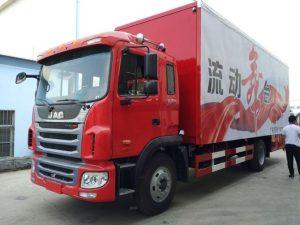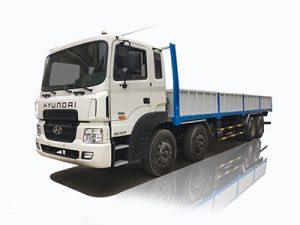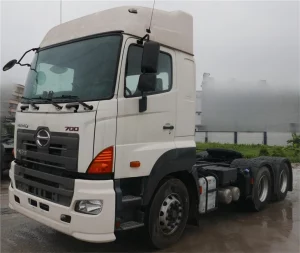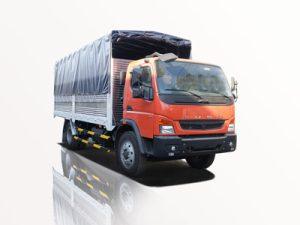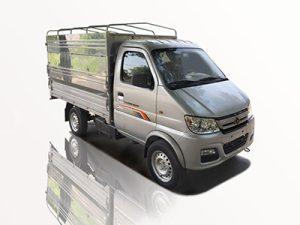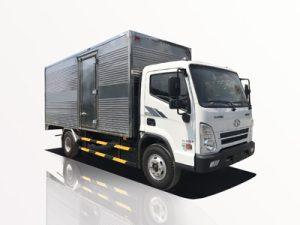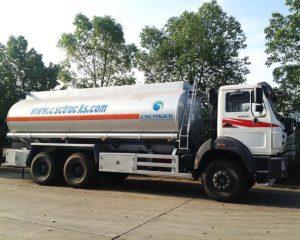Monday to Saturday - 8:00 -17:30
How Does a Concrete Mixer Truck Work? A Comprehensive Guide
Concrete mixer trucks are vital vehicles in the construction industry, responsible for the transportation and mixing of concrete to ensure it arrives at job sites ready for use. Understanding how concrete mixer trucks work, their components, and their operations can help optimize their use and enhance project outcomes. This article aims to provide an in-depth look at the workings of concrete mixer trucks, including practical insights and tips for concrete mixing and delivery.
Table of Contents
- What Is a Concrete Mixer Truck?
- Key Components of Concrete Mixer Trucks
- How Concrete Mixer Trucks Work
- Types of Concrete Mixer Trucks
- Factors Affecting Concrete Quality
- Tips for Using Concrete Mixer Trucks
- Safety Considerations for Concrete Mixer Trucks
- Maintenance of Concrete Mixer Trucks
- Concrete Mixer Trucks vs. Other Mixing Methods
- Frequently Asked Questions
What Is a Concrete Mixer Truck?
A concrete mixer truck is a specialized vehicle designed to carry mixed concrete from a batching plant to construction sites. It typically features a rotating drum that mixes the concrete ingredients during transportation to prevent it from setting before use. The main purpose of this truck is to ensure that concrete arrives at the job site in the right consistency and at the right time.
Key Components of Concrete Mixer Trucks
Concrete mixer trucks are composed of several key components, each playing a crucial role in the overall function of the vehicle.
1. Mixer Drum
The mixer drum is the most recognizable part of a concrete mixer truck. Its cylindrical shape allows for the mixing of concrete ingredients. The interior of the drum is equipped with blades that facilitate the mixing process, ensuring uniformity and preventing concrete from hardening.
2. Chassis
The chassis provides the structural framework for the truck. It includes the main body, axles, suspension, and wheels. The design of the chassis is crucial for supporting the weight of the mixed concrete, which can weigh several tons.
3. Feeding System
The feeding system delivers the components required for mixing concrete, such as cement, water, aggregates, and additives. These materials are usually loaded from a batching plant into the mixer drum.
4. Discharge Chute
The discharge chute is located at the rear of the mixer drum and allows for the concrete to be poured at the job site. Its angle can be adjusted to control the flow of concrete.
5. Hydraulic System
A hydraulic system powers the drum rotation and controls the discharge chute. This system ensures that the mixing process remains efficient and controlled.
6. Control System
The control system enables the driver to manage the operations of the mixer truck, including the rotation speed of the drum and the release of the concrete mixture.
How Concrete Mixer Trucks Work
Understanding the operational process of concrete mixer trucks is critical for optimizing their use. Here’s how they generally work:
1. Loading the Mixer
Initially, the raw materials for concrete—cement, water, sand, gravel, and any additives—are loaded into the mixer drum at a batching plant. This process is usually automated, ensuring precise measurements for consistency.
2. Mixing Process
Once loaded, the mixer drum begins rotating. The internal blades mix the raw materials thoroughly, ensuring a consistent concrete mixture. Depending on the distance to the job site, the drum can continue mixing gently during transportation, preventing the concrete from hardening.
3. Transportation
The truck transports the mixed concrete to the construction site. During transport, the truck travels along roads and may need to navigate through traffic. Careful driving is essential to maintain the integrity of the concrete mix.
4. Discharging the Concrete
Upon arrival at the location, the driver positions the truck to facilitate a smooth discharge. The drum continues to rotate, and the concrete is poured out through the discharge chute, ensuring an even flow to the required areas. Adjustments to the chute angle help control the placement of the concrete.
Types of Concrete Mixer Trucks
Concrete mixer trucks come in different types, each catering to specific needs. Here are the most common types:
1. Transit Mixers
Transit mixers are the most common type of concrete mixer trucks. They have a rotating drum and are used primarily for transporting ready-mixed concrete to construction sites.
2. Tipper Mixers
Tipper mixers combine the functions of mixing and discharging concrete. The mixer drum can be tipped to pour, allowing for efficient unloading at the job site.
3. Volumetric Mixers
Volumetric mixers allow for on-site mixing of concrete. They store raw materials in separate compartments and mix them only when required, ensuring freshness and reducing waste.
Factors Affecting Concrete Quality
The quality of concrete delivered by a mixer truck can be influenced by several factors:
1. Material Quality
The quality of the raw materials used in the concrete mix significantly impacts the final product. High-grade cement, clean aggregates, and fresh water contribute to stronger concrete.
2. Mixing Time
Proper mixing time is essential for achieving a uniform consistency. Insufficient mixing can lead to weak points in the concrete.
3. Temperature Conditions
Extreme temperatures can affect the setting time of concrete. Hot weather can cause faster curing, while cold weather can slow it down. It’s important to manage these conditions during transport and placement.
4. Transportation Time
Minimizing the time between mixing and discharging concrete is crucial for maintaining quality. Delays can lead to setting issues, impacting the overall integrity of the concrete.
Tips for Using Concrete Mixer Trucks
To maximize the efficiency and effectiveness of concrete mixer trucks, consider the following tips:
1. Plan Ahead
Schedule the delivery of concrete based on your project requirements. This planning ensures that concrete is available when needed and minimizes delays.
2. Monitor Conditions
Keep an eye on weather conditions that might affect concrete setting. Adjust your mix or delivery times accordingly.
3. Use Proper Techniques
Ensure that the concrete is discharged using proper techniques. Use equipment that helps with the placement to avoid wastage and ensure even distribution.
4. Communicate with the Driver
Maintain open communication with the truck driver to coordinate the delivery and unloading of concrete. This ensures a smooth process and can help address any unexpected issues promptly.
Safety Considerations for Concrete Mixer Trucks
Safety is paramount in the operation of concrete mixer trucks. Here are key safety considerations:
1. Training and Certification
Ensure that all operators are trained and certified to handle concrete mixer trucks. Proper training reduces the risk of accidents.
2. Inspection and Maintenance
Regularly inspect and maintain the mixer truck to ensure all parts are functioning properly. This avoids malfunctions that can lead to dangerous situations.
3. Safety Gear
Always wear appropriate safety gear, including hard hats, gloves, and reflective vests when working around mixer trucks.
4. Site Management
Designate specific areas for mixer trucks to operate. Clear traffic routes reduce the risk of collisions and promote a safer working environment.
Maintenance of Concrete Mixer Trucks
Proper maintenance of concrete mixer trucks extends their lifespan and ensures optimal performance. Here are some essential maintenance practices:
1. Regular Inspections
Conduct regular inspections of the mixer truck’s components, including the hydraulic system, drum, and chassis. Look for signs of wear and damage.
2. Clean the Drum
After every use, clean the mixer drum thoroughly to remove leftover concrete. Residue buildup can affect the quality of future mixes.
3. Change Fluids Regularly
Monitor and change hydraulic and engine fluids as needed to ensure smooth operation and prevent mechanical failures.
4. Tire Maintenance
Check tire pressure regularly and inspect for wear. Proper tires are crucial for safe transport and handling, especially when carrying heavy loads.
Concrete Mixer Trucks vs. Other Mixing Methods
Concrete mixer trucks offer distinct advantages compared to other concrete mixing methods. Let’s explore some comparisons:
| Method | Advantages | Disadvantages |
|---|---|---|
| Concrete Mixer Truck |
|
|
| Batching Plant |
|
|
| Hand Mixing |
|
|
Frequently Asked Questions
1. How long can concrete sit in a mixer truck?
Concrete should ideally be delivered and used within 90 minutes of mixing, especially in warm weather. Beyond this time, the concrete may begin to set.
2. Can you mix concrete in a mixer truck on-site?
Volumetric mixers allow for on-site mixing but conventional transit mixers are primarily designed for transporting pre-mixed concrete.
3. What are the weight limits for concrete mixer trucks?
The weight limit varies by region but typically ranges from 20,000 to 40,000 pounds, depending on the truck size and local regulations.
4. How do you ensure a uniform mix?
Proper loading, mixing, and timely delivery are essential in achieving uniform concrete. Regular maintenance of the mixer drum also helps.
5. What should be done if the concrete starts to set in the truck?
If concrete begins to set, a qualified operator can add additional water while mixing to slow down the setting process, but this should be done cautiously to avoid compromising quality.
6. Are concrete mixer trucks environmentally friendly?
Modern concrete mixer trucks often use designs and technologies that minimize emissions and improve fuel efficiency, making them more environmentally friendly than older models.


